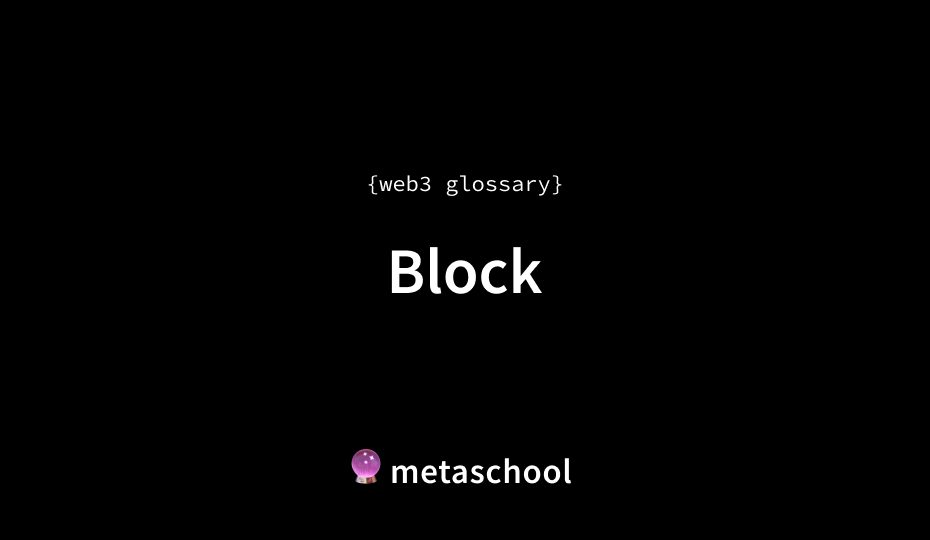Table of Contents
What is a block in blockchain? 📖
Remember reading how mitochondria are the powerhouse of a cell? Similarly, a block is the powerhouse of a blockchain. It is a data structure in the blockchain database where records of transactions in a cryptocurrency are stored permanently.
The concept of these blocks was presented by an anonymous person, Satoshi Nakamoto, in 2008. It is important to note that Satoshi is also the creator and founder of Bitcoin.
His idea was that each block in the chain must contain the address of other blocks and they are chained with each other thus forming a blockchain. As a novice idea, this proved to be groundbreaking as today the whole of web3 technology today is based on a chain of blocks known as a blockchain.
Block in layman’s terms
The simplest way to understand a block would be to think of it as a piece of a large puzzle. To simplify this further, let’s use Bitcoin. Now Bitcoin miners, individuals who verify transactions and mine the blocks, get some 6.25 Bitcoins (BTC) on mining a block. This amount is halved every 210,000 blocks.
Imagine these 210,000 blocks as a part of a huge puzzle. From the 1st to the 210,000th block, this whole puzzle (which we call blockchain) is connected.
Each block has a different identity (the hash value) which makes it immutable and has a certain number of transactions (generally each block has somewhere around 2000 transactions and the size of a block is somewhere around 1MB). If you happen to exchange two blocks or move them from their designated places, the entire puzzle will go to waste.
What is crypto mining?
There are thousands of blockchains in the ecosystem today. Each follows a specific consensus mechanism. And why a consensus mechanism, you ask? This is because a blockchain consists of nodes as well. Nodes and blocks are both pivotal parts of a blockchain. Nodes help verify the transactions whereas the blocks are where the verified transactions are stored. Both are involved in the verification process and then adding it to the block eventually.
Now, back to the consensus mechanisms. Some blockchains follow the Proof-of-Work consensus mechanism; whereas some follow the Proof-of-Stake consensus mechanism. Mining is mostly done in those that follow PoW.
To further understand how the consensus mechanism works, read the following article:
How do individual blocks of information form a chain?
A block is a permanent, immutable record of a transaction that can never be changed or removed once a transaction is added.
A new block is created when a new transaction is entered and validated on the chain. Once the transaction is validated, it gets closed and then only a new one is created for a transaction.
The first block in a chain is the genesis block which happens to be the only one that doesn’t contain data of the previous hash because it’s the first in the chain.
Moreover, it can be identified by its cryptographic hash, which is a digital fingerprint made by hashing the block header twice in the Secure Hash Algorithm (SHA-256). The resulting 32-byte hash is called a hash.
The hash of the first Bitcoin block ever created looks like this 👇🏼
000000000019d6689c085ae165831e934ff763ae46a2a6c172b3f1b60a8ce26f
What does the hash of a block consist of?
The hash value of a block in a blockchain consists of the following super-important elements which are:
- Nonce – a random number – used to generate a hash value
- The hash of the previous block
- The difficulty target meaning how difficult it is to find a hash value of the block and add it to the blockchain. For example, Bitcoin has a time limit of 10 minutes to verify a block. If the miners verify blocks faster, the difficulty level shall increase.
- Timestamp of when the block was created
Blocks store a lot of pieces of information which include 👇🏼
- A list of transactions that have been recorded
- The number of transactions
- The size so that only a specific amount of information is stored
- A number that contains values and can be used to identify the block as a part of a cryptocurrency’s network
Blocks ensure that attacking a blockchain becomes virtually impossible because there is no central ledger to hack. Thus their function and presence make a blockchain very secure.
Lastly, a block is:
- Immutable
- Has a cryptographic identity
- A container for all the transactions-related data on a blockchain
- And the single most important component of a blockchain that maintains the whole ecosystem
